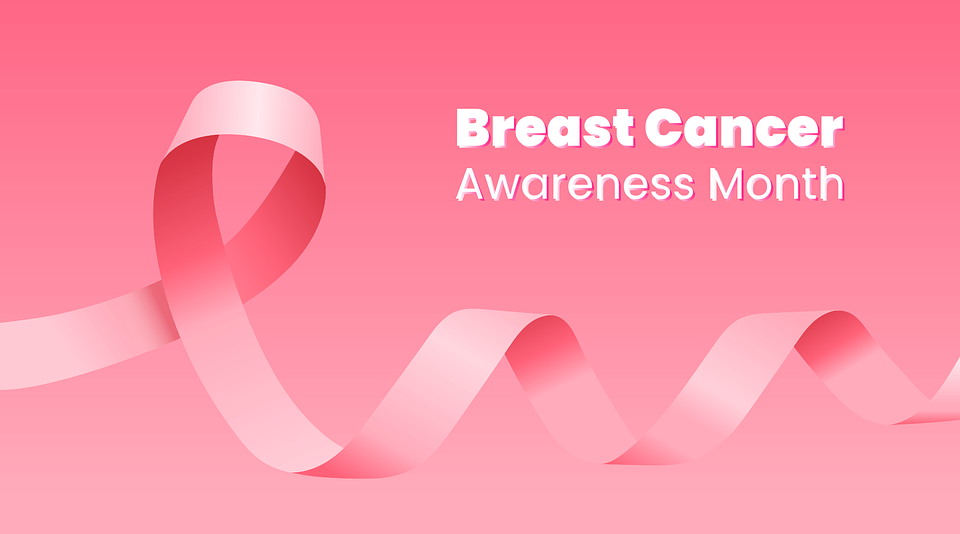
Breast Cancer Awareness Month
October is Breast Cancer Awareness Month! Breast cancer affects 1 in 8 women in the United States, and it is the second most common type of cancer affecting women. Fortunately, scientists and medical professionals have made great advances in detecting and treating breast cancer, making the 5-year relative survival rate 99%. Despite the increasing survival rates of individuals with breast cancer, it is still important to educate yourself about common symptoms, self-exams, treatment options, and long-term effects of the disease.
Symptoms
While no one’s experience with breast cancer is quite the same, there are several symptoms that are commonly seen in women that have been diagnosed. Some symptoms include, but are not limited to:
- A lump or thickening in the breast or underarm
- Changes in the breast appearance, shape, or size
- Irritation, dimpling, or itchiness of the breast
- A recent inversion of the nipple
- Peeling or flaking of the nipple skin
- Nipple discharge other than breast milk
- Pain and discomfort in the breast area
How to Check for Breast Cancer
There are two main ways that women can check for early signs of breast cancer. The first way is to perform a self-examination. It is recommended to conduct a self-exam of the breasts at least once a month so that you become well acquainted with how your breasts normally look and feel, thus making it easier to detect if something is unusual. Here are some ways to conduct a self-examination:
- In the shower, use your three middle fingers to press down on the breasts with varying amounts of pressure to feel for any lumps, thickening, or knots.
- In front of a mirror, put your arms down at your sides and visually inspect your breasts to look for changes in shape, size, or texture. Additionally, place your hands on your hips and look for any irregularities in the breasts.
- Lying down, place a pillow under your left shoulder and put your left arm behind your head. Using your right hand, move your three middle fingers and press down on the breasts with varying amounts of pressure to feel for any lumps, thickening, or knots. Additionally, squeeze the nipple to check for any unusual discharge. Repeat steps on the opposite side.
While performing a self-examination is a great way to check for early symptoms of breast cancer, it should also be done in conjunction with regular mammograms, which are often more precise. During a mammogram, an X-ray machine takes images of the breasts to check for any abnormalities. Women are encouraged to get a mammogram at least once a year beginning at the age of 40, and at an even earlier age if there is a family history of breast cancer.
Treatment
If you are diagnosed with breast cancer, there are a variety of different treatments that you and your doctor can choose from. Treatments differ depending on the severity and type of breast cancer, among other factors. Here are some treatment options:
- Chemotherapy
- Surgery
- Radiation therapy
- Immunotherapy
- Palliative care
- Hormonal therapy
- Biological therapy
Long-Term Effects
Once a breast cancer treatment method has been completed, it is important to be aware that it is possible for some long-term and lingering effects to exist. Some long-term effects of breast cancer include fatigue, chronic pain, lymphedema, anxiety, and cognitive dysfunction.
Sometimes, these long-term effects can be debilitating and make it difficult to carry out one’s daily activities. If the long-term effects of breast cancer are impeding your ability to perform the duties of your job, it is important to contact a long-term disability benefits attorney to discuss the benefits you may be entitled to.
Let’s Spread Awareness
With the prominence of breast cancer across the nation, it is vital to spread the word and facilitate healthy conversations around the topic of breast cancer. Women are not the only ones who can suffer from breast cancer, as 1 in 833 men will also be diagnosed in their lifetime. Therefore, let’s diminish the stigma around discussing health issues and spread awareness about breast cancer and its early warning signs. Together, we can help in the fight to end breast cancer!






